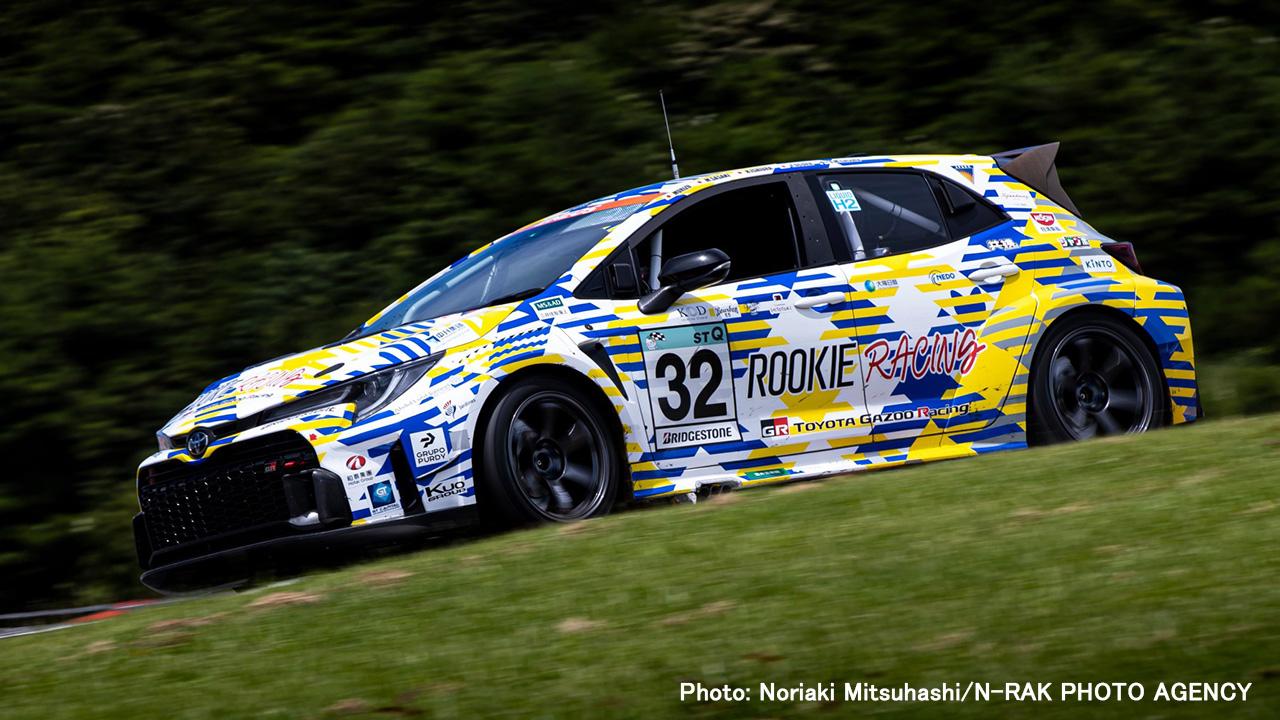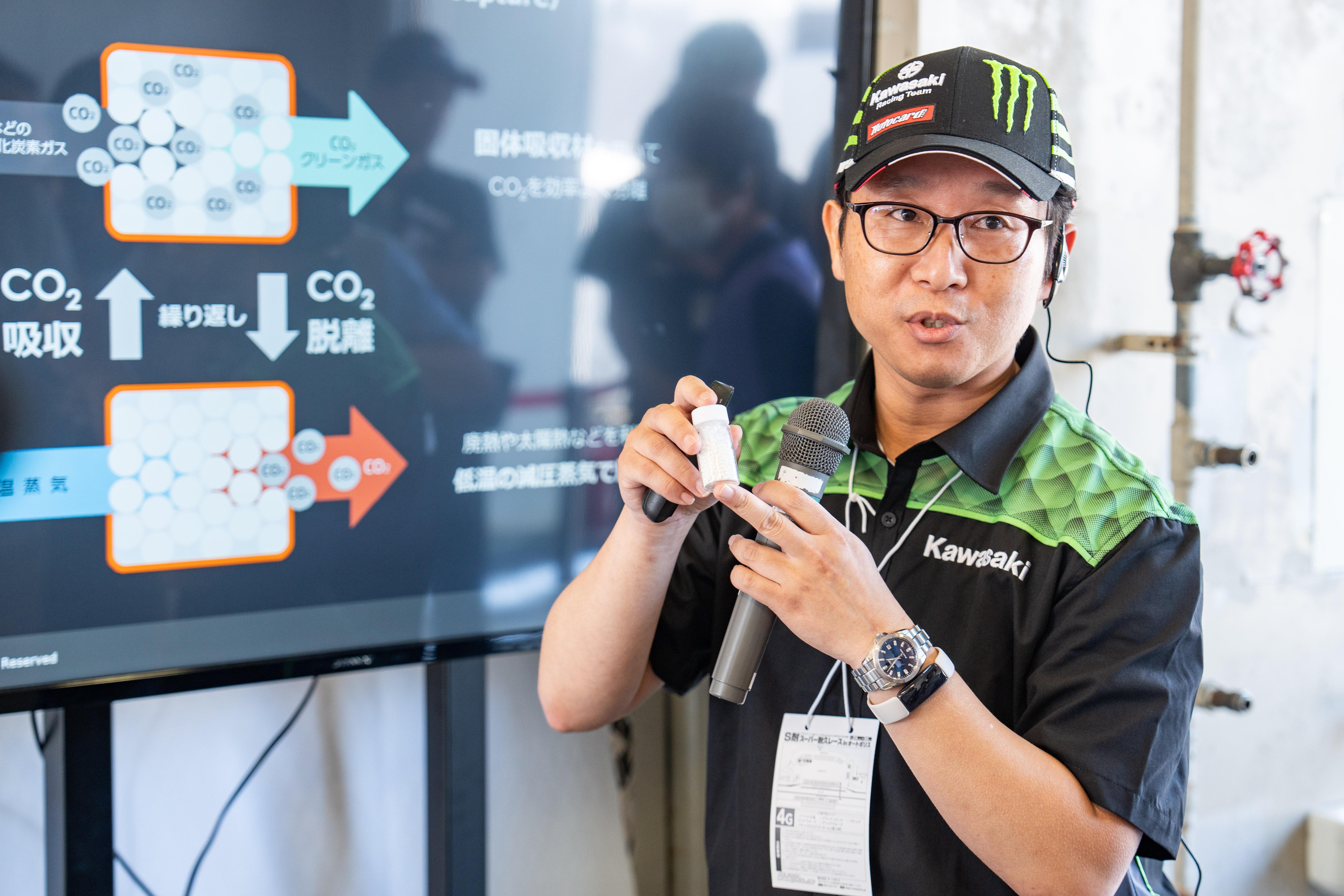
The fuel may have changed from gas to liquid, but Toyota's development is as agile as ever. See how far the car and hydrogen stations have come in just two months.
Capture technologies crucial for decarbonization
In the pits that housed the team’s mobile hydrogen station, Kawasaki Heavy Industries also showcased the direct air capture (DAC) technology it is developing to extract CO2 from the atmosphere.
Project General Manager Ito explained why the display was set up near the refueling area.
“We have the Corolla running on hydrogen and the 86 on carbon-neutral fuel. To speak of these fuels as carbon-neutral assumes having access to carbon capture technology. For that reason, we feel the need to work together and firmly support the development of this technology.”
The hydrogen used in this race was produced by Kawasaki Heavy Industries from Australian lignite and then transported to Japan. To make it carbon neutral, the CO2 generated in the production process is buried in the ground.
Kazuo Tanaka, head of Kawasaki’s Energy Systems Research Division, explained the solid sorbents that are the key to DAC.

The white granules are porous, like sponges, with each gram possessing the surface area of an elementary school gymnasium.
As air is passed through it, the material absorbs only CO2, which can then be extracted by applying steam.

Kawasaki’s competitive advantage is the ability to capture CO2 with low-temperature steam (60°C). Compared to rival manufacturers overseas, these lower temperatures also reduce the cost of extracting carbon.
What’s more, since highly populated areas have far higher concentrations of CO2, a greater amount can be captured with less energy.
Tanaka shared his vision: “We hope to be capturing atmospheric CO2 on a large scale by around 2030.”
Moving closer to commercialization with each improvement
In the two months since its last race, the liquid hydrogen Corolla has undergone a major evolution. Even the engine’s output has been boosted by several percent since Fuji.
In the past, after refueling the hydrogen Corolla would run out the rest of each race at the back of the pack.
Now, extended range and shorter refueling times are gradually putting the team in contention; in the last race, the car could even be seen gaining positions between pitstops.
When asked if the recent progress brings commercialization closer, President Takahashi responded without hesitation:
“The answer is yes. Our current phase is about gathering data and building up the fundamental technology. I have no doubt that what we are doing now will contribute to future products.”

